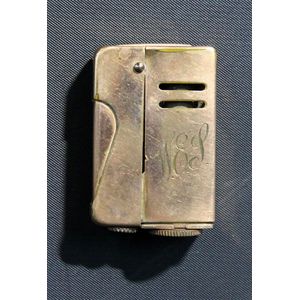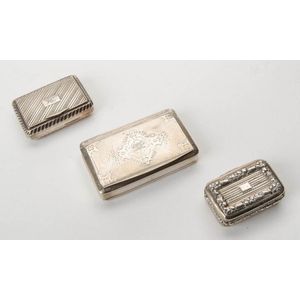Victorian and Later Sterling Silver Vesta and Snuff Box
You must be a subscriber, and be logged in to view price and dealer details.
Subscribe Now to view actual auction price for this item
When you subscribe, you have the option of setting the currency in which to display prices to $Au, $US, $NZ or Stg.
- Sterling Silver - Sterling silver is a mixture of 92.5% pure silver and 7.5% of another metal, usually copper. Fine silver is 99.9% pure silver, and is relatively soft and the addition of the very small amount of copper gives the metal enough strength and hardness to be worked into jewellery, decorative and household objects.
- Victorian Period - The Victorian period of furniture and decorative arts design covers the reign of Queen Victoria from 1837 to 1901. There was not one dominant style of furniture in the Victorian period. Designers used and modified many historical styles such as Gothic, Tudor, Elizabethan, English Rococo, Neoclassical and others, although use of some styles, such as English Rococo and Gothic tended to dominate the furniture manufacture of the period.
The Victorian period was preceded by the Regency and William IV periods, and followed by the Edwardian period, named for Edward VII (1841 ? 1910) who was King of the United Kingdom and the British Dominions and Emperor of India for the brief period from 1901 until his death in 1910. - Engine Turned - Engine turning is a decorative technique used on metal surfaces to create intricate curving or geometric pattern. The process involves cutting a series of lines into the surface of the metal using a rose engine or decoration lathe which rotates the metal as it cuts, allowing the operator to create a repeating pattern that covers the entire surface. The resulting surface has a shimmering, reflective quality that is often described as "engine turned." Where an engine turned item has been enamelled, the term used to describe the decoration is usually guilloche.
Engine turning was originally developed to decorate metal objects such as firearms, scientific instruments, and other metal objects that required precise and elegant design.
This item has been included into following indexes:
Visually similar items

A vintage Australian gold plated lighter by Preslite

An old Chinese bronze scholar's large desk seal, the square seal with multiple character marks measuring 6.3 cm x 62, fine engraved calligraphy to two sides and seal top, long tapered oval section handle. Length 11.5 cm.

Antique Sterling silver vesta with bright cut engraved flowers. Hallmarked for Walker & Hall, Chester. C.1911. Approx 31g

A collection of three silver snuff boxes comprising a French engraved rectangular box probably early 19th century, by Guichard. Together with two Georgian silver finely tooled hinged boxes Birmingham Joseph Taylor 1819 and William Lea & Co 1817 106gms (tot
